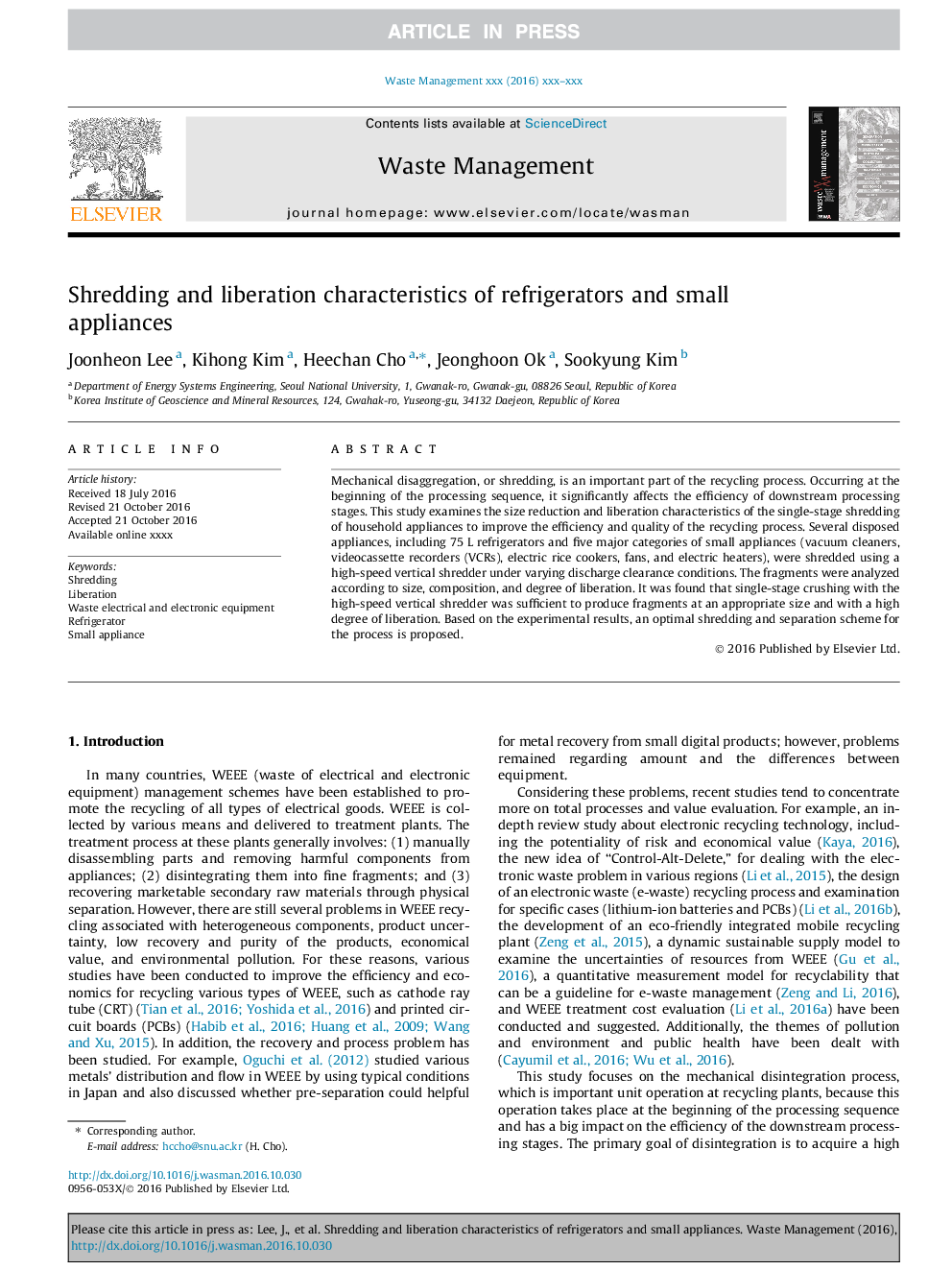| Article ID | Journal | Published Year | Pages | File Type |
|---|---|---|---|---|
| 5757045 | Waste Management | 2017 | 13 Pages |
Abstract
Mechanical disaggregation, or shredding, is an important part of the recycling process. Occurring at the beginning of the processing sequence, it significantly affects the efficiency of downstream processing stages. This study examines the size reduction and liberation characteristics of the single-stage shredding of household appliances to improve the efficiency and quality of the recycling process. Several disposed appliances, including 75Â L refrigerators and five major categories of small appliances (vacuum cleaners, videocassette recorders (VCRs), electric rice cookers, fans, and electric heaters), were shredded using a high-speed vertical shredder under varying discharge clearance conditions. The fragments were analyzed according to size, composition, and degree of liberation. It was found that single-stage crushing with the high-speed vertical shredder was sufficient to produce fragments at an appropriate size and with a high degree of liberation. Based on the experimental results, an optimal shredding and separation scheme for the process is proposed.
Related Topics
Physical Sciences and Engineering
Earth and Planetary Sciences
Geotechnical Engineering and Engineering Geology
Authors
Joonheon Lee, Kihong Kim, Heechan Cho, Jeonghoon Ok, Sookyung Kim,
